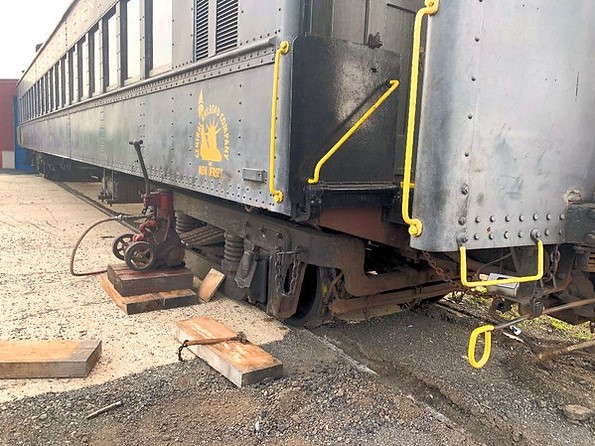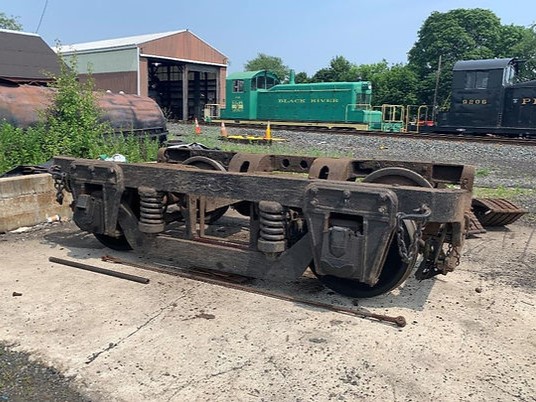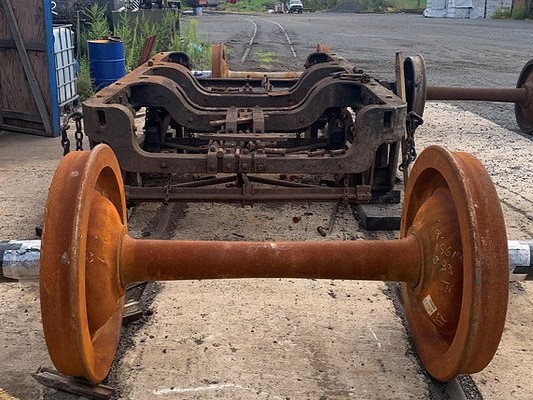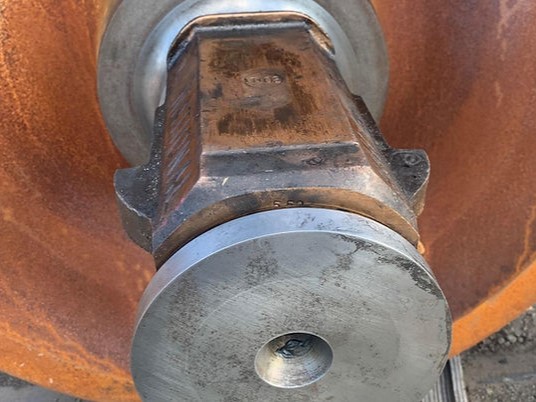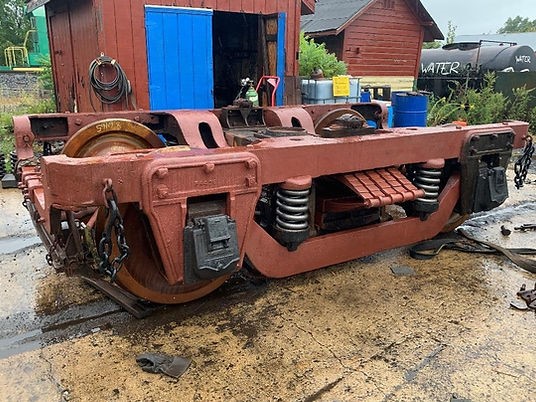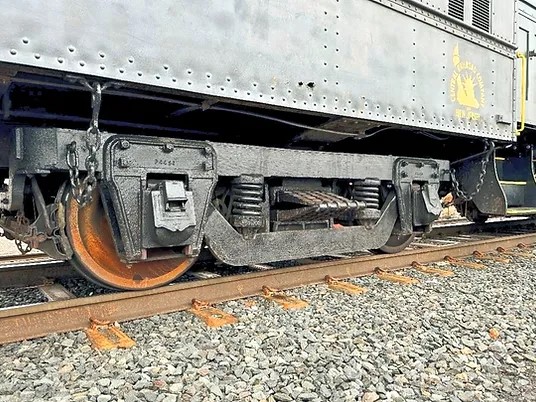Thanks to a generous grant from the Emery Rail Heritage Trust, the Black River Railroad Historical Trust was able to perform significant life-extending upgrades to the trucks on Central Railroad of New Jersey Coach No. 1009. This grant, for $12,000, contributed significantly to the purchase of new wheels, springs, and associated materials for the trucks on the railcar.
The existing wheelsets on the coach were very near the end of their life, and if not addressed would have eventually led to the car no longer being fit for service. Thanks to the help of this grant, the Black River Railroad Historical Trust was able to purchase four brand new wheelsets, equipped with multi-wear wheels that can be reprofiled up to three times should a reason arise. We anticipate that we will get generations worth of use out of these wheelsets.
The existing leaf and coil springs on the car were worn and were no longer sitting at their design height. This problem had been addressed temporarily in the past by shimming underneath the springs, however it was no longer practical to add additional shims. Thanks to the funding from this grant, we purchased brand new coil springs. We also were looking at brand new leaf spring packs, however after some deliberation, we determined that it was most cost effective to purchase new individual leaf springs and assemble the packs in house. As the trucks were taken apart, other components that were found worn or in need of repair were also replaced or repaired.
All of the labor for this project was done in-house by volunteers. Some of our volunteers were previously involved in similar projects on other railroads, and they led work sessions where they trained other volunteers. We were able to train many of our more junior volunteers on both the mechanics of passenger car trucks as well as how to maintain them and replace components. As a result, this work also became an excellent educational opportunity to continue mentoring younger volunteers and transferring knowledge to the next generation.
We are extremely grateful to the Emery Rail Heritage Trust for their generous support of the Black River Railroad Historical Trust’s rail preservation activities. Below are some pictures of the work made possible by this grant.
Figure 2 – A truck after removal, with the bolster and leaf springs removed.
Figure 3 – New wheelsets sit next to the truck frame they will soon occupy.
Figure 4 – Existing plain bearings were machined and test fit prior to truck re-assembly.
Figure 5 – A rebuilt truck with new wheels and springs sits prior to going back under the car.
Figure 6 – A rebuilt truck assembly after installation.

